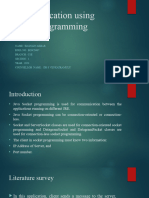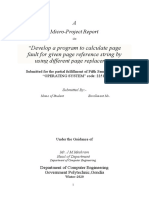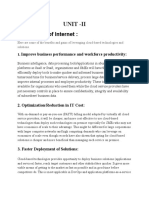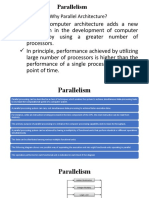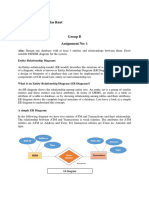0% found this document useful (0 votes)
265 views1 pageOperating Systems/Interprocess Communication Mini Project
This document outlines three mini projects involving interprocess communication:
1. Two processes communicate via shared memory to periodically retrieve and format a list of all running processes on the system.
2. The same server process updates a shared memory list of running processes every 5 minutes, and the client counts how many times each process was running to identify continuously running processes.
3. A supervisor process divides a prime number calculation range among slave processes on different hosts, using sockets to communicate the ranges. Pipes and FIFOs simulate this locally.
Uploaded by
Avinash KumarCopyright
© Attribution Non-Commercial (BY-NC)
We take content rights seriously. If you suspect this is your content, claim it here.
Available Formats
Download as PDF, TXT or read online on Scribd
0% found this document useful (0 votes)
265 views1 pageOperating Systems/Interprocess Communication Mini Project
This document outlines three mini projects involving interprocess communication:
1. Two processes communicate via shared memory to periodically retrieve and format a list of all running processes on the system.
2. The same server process updates a shared memory list of running processes every 5 minutes, and the client counts how many times each process was running to identify continuously running processes.
3. A supervisor process divides a prime number calculation range among slave processes on different hosts, using sockets to communicate the ranges. Pipes and FIFOs simulate this locally.
Uploaded by
Avinash KumarCopyright
© Attribution Non-Commercial (BY-NC)
We take content rights seriously. If you suspect this is your content, claim it here.
Available Formats
Download as PDF, TXT or read online on Scribd
/ 1
